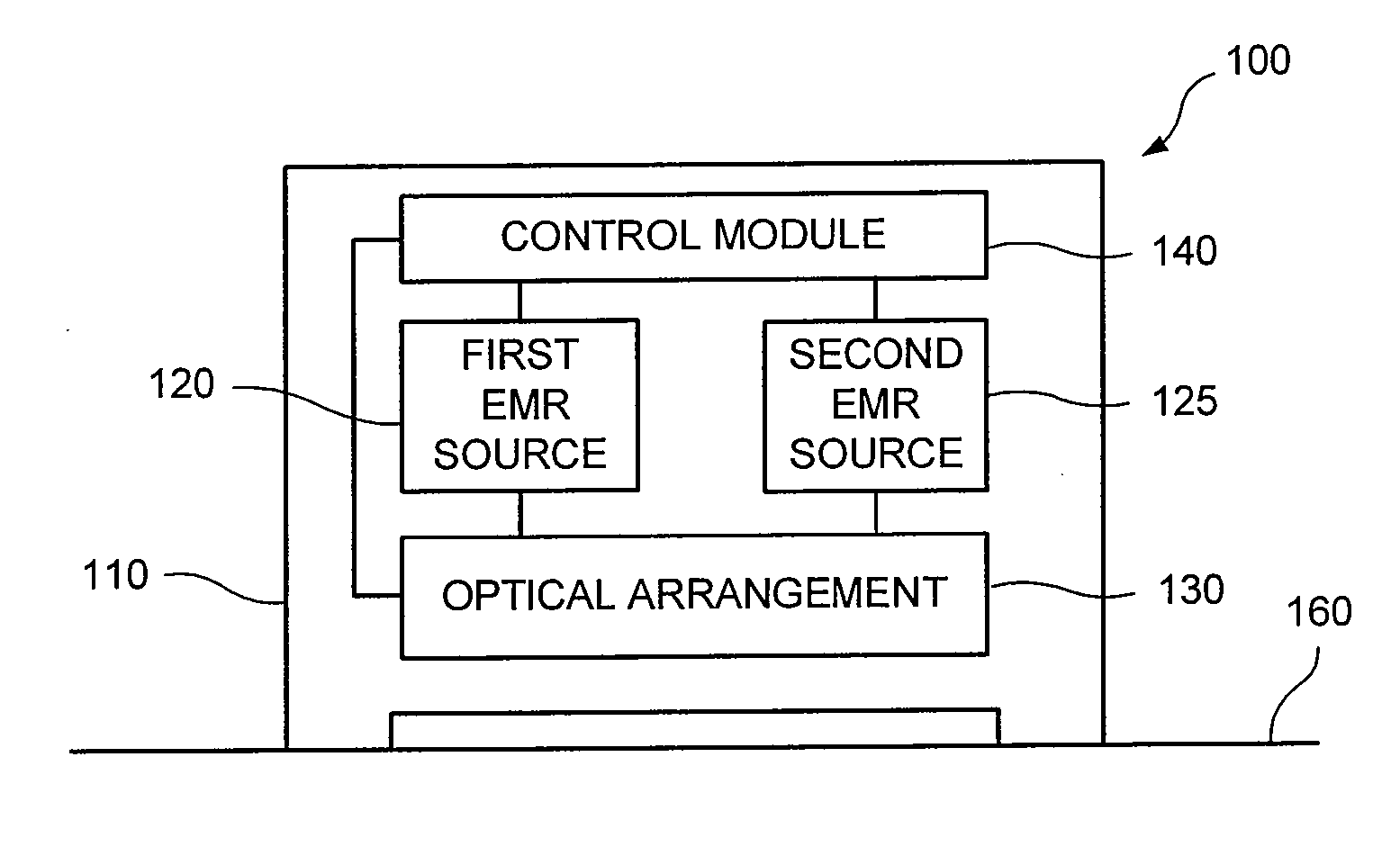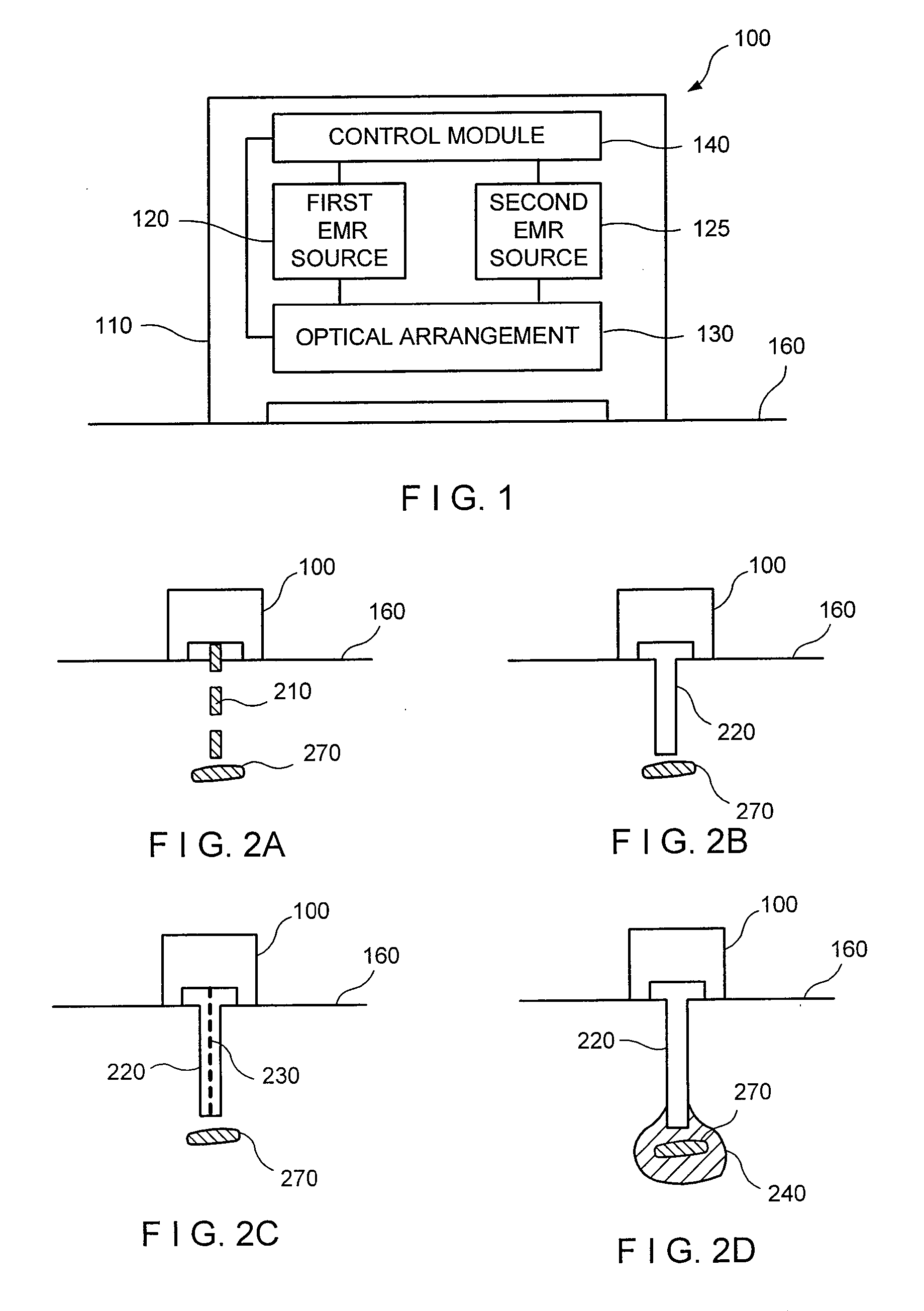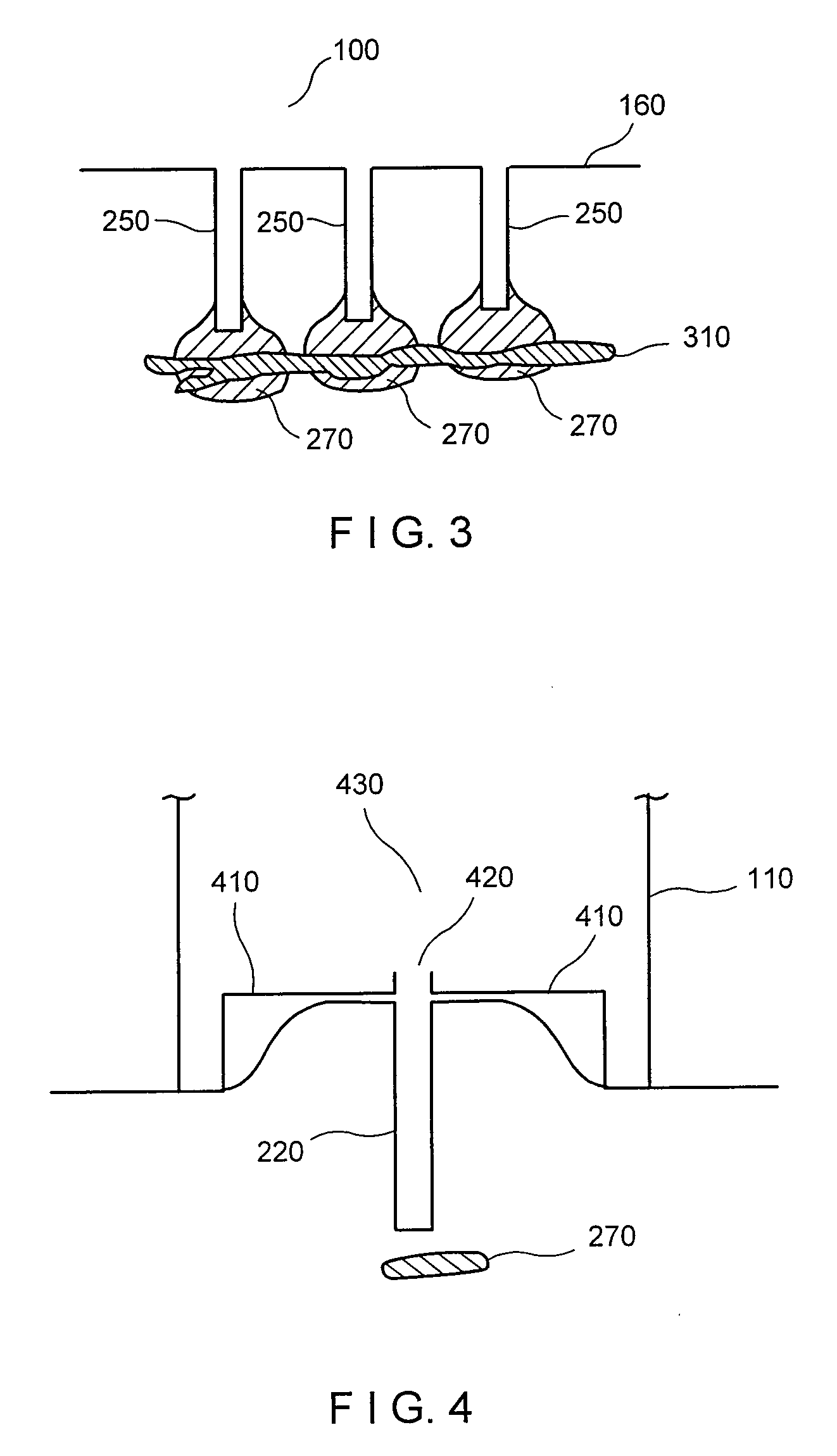Method and apparatus for producing thermal damage within the skin
a technology of thermal damage and skin, applied in the field of methods and equipment, can solve the problems of complex wound healing response of the skin, high absorption rate and little penetration, complex treatment, etc., and achieve the effects of reducing the extent of lateral thermal damage, improving the stability of the hole, and being more mechanically rigid
- Summary
- Abstract
- Description
- Claims
- Application Information
AI Technical Summary
Benefits of technology
Problems solved by technology
Method used
Image
Examples
Embodiment Construction
[0008] It is therefore one of the objects of the present invention to provide exemplary apparatus and method that can combine safe and effective treatment for an improvement of the dermatological disorders with minimum side effects. Another object of the present invention is to provide exemplary apparatus and method that generate a region of thermal damage deep below the skin surface that can be located accurately while causing only a small amount of damage to other nearby tissues.
[0009] These and other objects can be achieved using the exemplary embodiment of the apparatus and method according to the present invention, in which a first ablative radiation sources can be configured to provide a beam to generate a small hole that penetrates the epidermis and terminates near the target area that is to receive thermal damage. A second, less-ablative or non-ablative radiation beam can then be directed into the hole where it can easily pass through the ablated passageway, and be absorbed...
PUM
 Login to View More
Login to View More Abstract
Description
Claims
Application Information
 Login to View More
Login to View More - R&D
- Intellectual Property
- Life Sciences
- Materials
- Tech Scout
- Unparalleled Data Quality
- Higher Quality Content
- 60% Fewer Hallucinations
Browse by: Latest US Patents, China's latest patents, Technical Efficacy Thesaurus, Application Domain, Technology Topic, Popular Technical Reports.
© 2025 PatSnap. All rights reserved.Legal|Privacy policy|Modern Slavery Act Transparency Statement|Sitemap|About US| Contact US: help@patsnap.com



